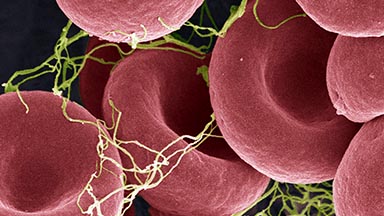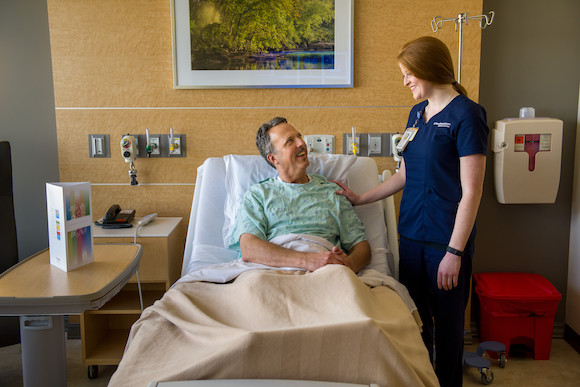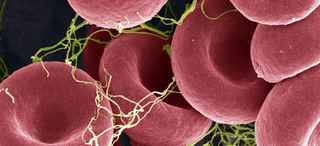Bone Marrow Transplant (Stem Cell Transplant)
About the Bone Marrow Transplant Procedure
New Patient Appointment or 214-645-4673

At UT Southwestern Medical Center, our Bone Marrow Transplant (BMT) Program delivers expert, personalized care using the latest techniques in stem cell transplantation. Whether the transplant uses the patient’s own cells or those from a donor, our experienced team is there every step of the way. We’re proud to have the highest one-year survival rate in North Texas.
Despite the name, the procedure doesn’t involve surgery. Instead, it’s performed much like a blood transfusion. The patient receives an infusion of healthy stem cells into the bloodstream, where they travel to the bone marrow and begin producing new blood and immune cells.
What to Expect with a Bone Marrow Transplant
Before the Bone Marrow Transplant
Care begins with a consultation and pretransplant workup. Patients meet their transplant physician and nurse, review medical history, and complete tests to ensure that they are healthy enough for transplant. They’ll also meet with a transplant coordinator and a social worker, who can help answer questions and prepare them for what’s ahead.
Some patients may be admitted to William P. Clements Jr. University Hospital before the transplant, while others may begin as outpatients based on their medical needs.
Patients may need one or more tests, such as:
- Bloodwork and imaging studies
- Heart and lung function tests
- Kidney and liver evaluations
- Bone marrow biopsy
- Dental evaluation to prevent infections
- Fertility preservation consultation, if appropriate
As part of the preparation, the care team will place a long, thin tube (called a central line) into a large vein in the patient’s chest or neck. This catheter stays in place throughout treatment and allows the team to safely infuse stem cells, medications, and blood products.

Stem Cell Collection
The collection process depends on the type of transplant:
- Autologous transplant: The patient gets injections of growth factors to stimulate stem cell production. The care team will collect the cells from the patient’s blood using a process called apheresis, then freeze and store them until transplant day.
- Allogeneic transplant: The donor typically undergoes a similar apheresis process. In some cases, doctors will collect bone marrow cells surgically from the donor’s pelvic bone.
Conditioning
Once testing and stem cell collection are complete, the patient begins the conditioning process to prepare the body for transplant. Conditioning involves chemotherapy and sometimes radiation to:
- Destroy cancer cells, if receiving treatment for cancer that could spread
- Suppress the immune system
- Prepare the bone marrow for the new stem cells
Our care team will tailor the conditioning regimen based on the patient’s diagnosis, overall health, and the type of transplant they’ll receive. Some patients receive high-dose chemotherapy, while others may get lower doses or different medications (reduced-intensity conditioning).
Transplant Day (Day 0)
The bone marrow transplant takes place after completion of the conditioning process. This milestone day is called "Day 0" because it marks the beginning of the recovery timeline.
The transplant infusion is painless, and the patient will be awake the entire time.
If the stem cells were frozen, the team will thaw them in a warm water bath just before the infusion. The patient receives premedications such as Tylenol® and Benadryl®. Then the care team will infuse the stem cells through the central line.
A nurse will stay with the patient throughout the procedure to monitor them, keep them comfortable, and help with any side effects, such as:
- A tickle in the throat
- Nausea or queasiness
- Chills or shivering
- A taste or smell caused by the preservative (DMSO) in frozen cells
After the Bone Marrow Transplant
In the days after transplant, blood cell counts will temporarily drop before the new cells begin to grow. During this time, the patient may be at increased risk for infection, anemia, or bleeding. Our care team will closely monitor the patient and may give medications, blood transfusions, or growth factors to help blood cell counts recover.
The new stem cells make their way to the bone marrow, where they begin to produce healthy blood cells. Most patients start to see their counts recover within 10 to 20 days.
Most patients stay in the hospital for three to four weeks after transplant, depending on how they’re doing. After discharge, they return to our clinic two to three times a week during the first 100 days. Full recovery can take several months to a year, and our transplant team will continue to support them every step of the way.
Engineering Better Options
In addition, we’re also able to transplant immune cells that have been specifically engineered with gene therapy to attack a patient’s cancer cells. This approach represents a lifesaving alternative for patients with severe forms of blood cancers. Additional trials using engineered T cells are in the planning stages.

Coordinating Complicated Cases
Chronic graft-versus-host disease (GVHD) can be a common complication for patients who have received allogeneic transplants. Our Chronic GVHD Program provides collaborative, multidisciplinary care from experts across multiple specialties to ensure the best quality of life for these patients.

